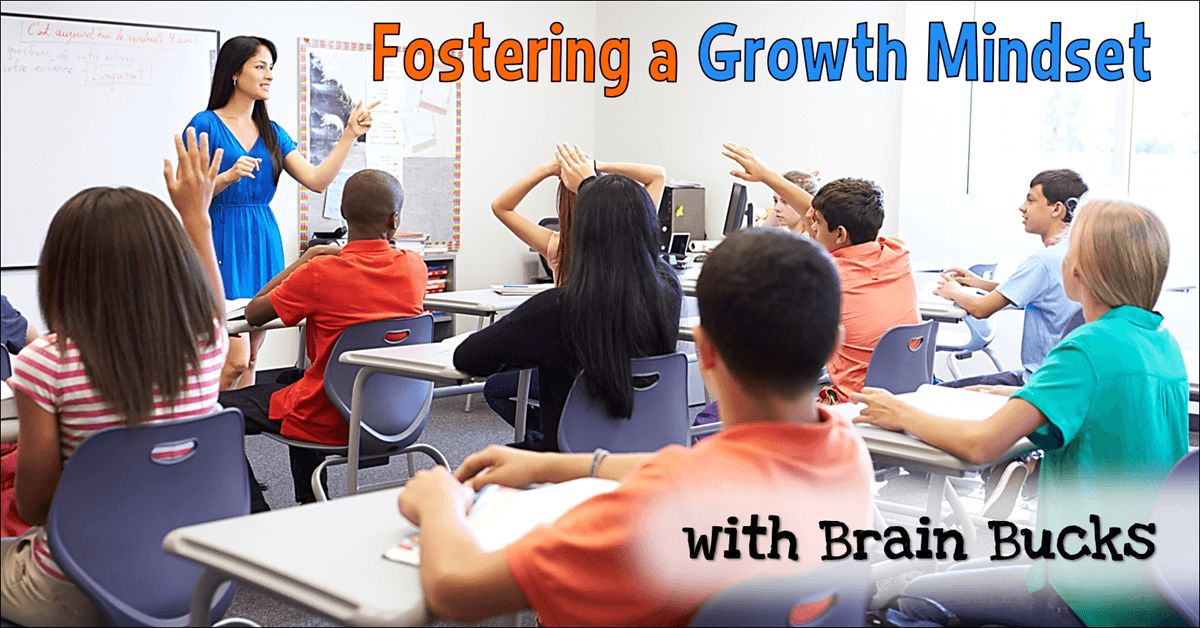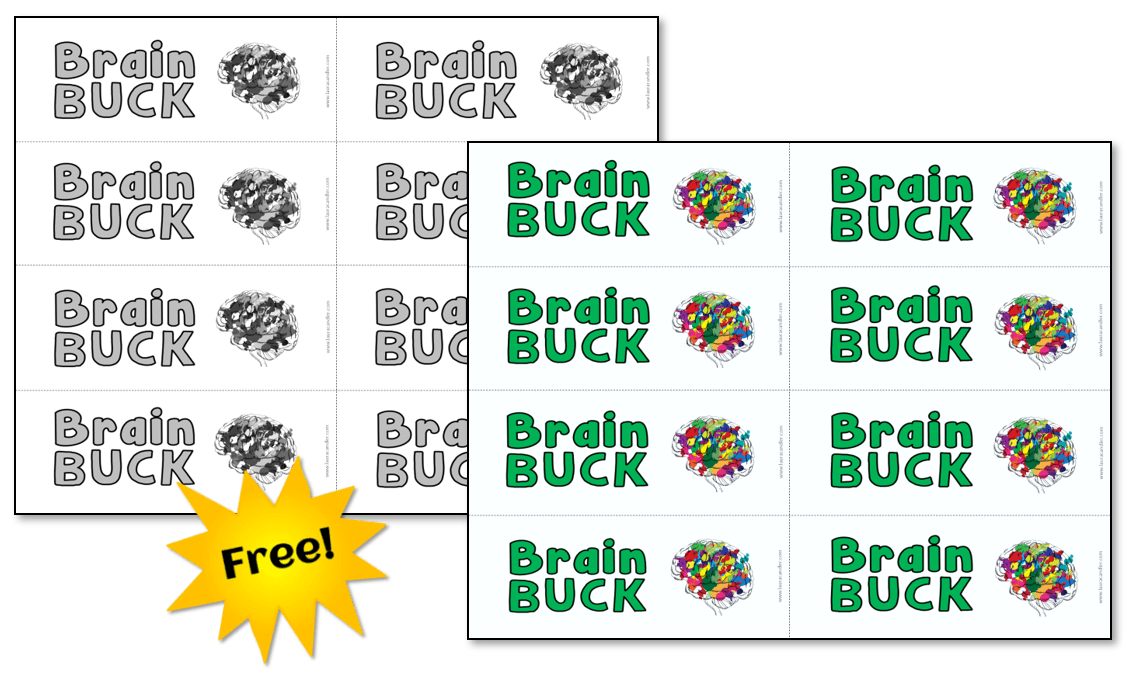Fostering a Growth Mindset with Brain Bucks

Teaching kids what it means to have a growth mindset is often easier than helping them replace their fixed mindset thoughts and behaviors with more empowering ones. For example, students who’ve learned that mistakes are an important part of the growing process may still be reluctant to try something new or to tackle a challenging assignment. Similarly, students who’ve learned to ask for help when they feel the slightest bit frustrated may become upset when their teacher expects them to do more on their own.
Let’s face it: change is difficult for all of us, even when we understand why we need to make changes.
Fortunately, with a little support and encouragement, even students who began the year with a fixed mindset can learn to adopt growth mindset behaviors and attitudes.
Recognizing the Hidden Messages in Praise
One of the most important steps we can take is to change how we praise students. Sometimes the most well-intentioned praise can inadvertently lead to fixed mindset thinking. For example, think about implications of saying, “Aren’t you smart! You made a 100 on the test without even trying!” This type of praise includes the hidden message is that we value the ability to make good grades without even trying. Students might also conclude if someone earns less-than-perfect scores or has to try hard, they must not be smart!
Instead of praising students for correct answers or for solving problems quickly, we can look for opportunities to praise them for qualities like persistence and creative thinking that demonstrate a growth mindset. The empowering message in this type of praise is that being smart is a more about what you do than who you are.
Using Brain Bucks to Foster a Growth Mindset
Verbal praise is appreciated by students, but they love getting silly tangible rewards, too. Several years ago I created Brain Bucks as a fun way to foster higher level thinking and problem solving. As it turns out, these qualities are essential to developing a growth mindset, too.

When I introduced Brain Bucks to my students, I explained that the only way to earn them was by using their brains. Here are some examples I shared with them:
- Thinking of a creative or unusual solution to a problem
- Being willing to discuss their failures or mistakes and how they learned from those experiences
- Catching ME in a mistake and being brave enough to tell me
- Showing persistence and a willingness to try multiple strategies
- Choosing a difficult assignment when there was an easier option
- Trying something new, especially when the student made mistakes but kept trying despite initial failures
To make it easy to use Brain Bucks throughout the day, I kept a supply of them in my desk drawer and actively looked for reasons to give them to students. When I observed someone engaged in one of the behaviors described above, I verbally praised the student as I handed him or her the paper Brain Buck. For example, if someone thought of a new way to solve a problem that had stumped the class, I handed the student a Brain Buck and said, “Way to use your brain today! I would never have thought of solving the problem that way!”
My students quickly realized that I valued creative thinking and problem solving more than simply getting the right answer. Soon they were noticing when their classmates “used their brains” and would recognize each other for this type of thinking. I frequently heard students say, “Mrs. Candler, I think she deserves a Brain Buck for that idea!”
Because Brain Bucks are just slips of paper and not real money, students need to be able to redeem them for something else that they value. This was easy for me because I already had a Classroom Economy system in place, and I simply incorporated Brain Bucks into that system. If you already have a reward system, assign a value to each Brain Buck and incorporate it into your existing system. If you don’t, and you’d like to learn more about mine, you can download my Classroom Economy Freebie here.
If you’d like to use Brain Bucks with your students, click here to download the two freebies shown in this post. You can print the color version on white paper, or print the black and white version on green paper.
Transitioning from External to Internal Rewards
Fortunately, external rewards like Brain Bucks become less important as students develop a growth mindset. The feeling of pride one experiences when overcoming an obstacle, trying something new, or accomplishing a challenging task becomes an internal reward that’s highly motivating. This sense of accomplishment will help your students become more confident as they face the challenges of school and of life. In the meantime, Brain Bucks provide a fun, effective, and inexpensive way to foster a growth mindset and encourage students to think outside the box!







